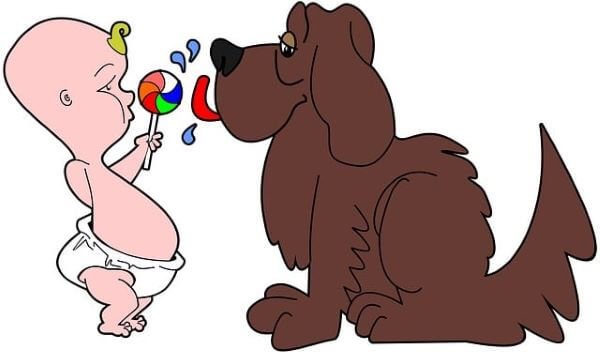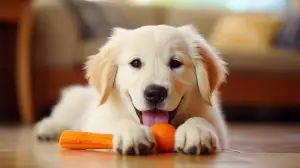While not toxic to babies, puppy pads are designed for training puppies to do their business indoors and should not generally be used for babies. Instead, use specialised baby changing pads that are safe and hygienic.

It may seem an outlandish idea to use puppy pads for babies, because we all know how important it is to use safe, clean, and reliable products when we’re caring for our babies. What if it turns out that using puppy pads, is a quick, hygienic, safe, and cost-effective alternative to more conventional products?
That’s why this this blog will address the question “Can you use puppy pads for babies?” to find out if it’s a good idea. I’ll compare puppy pads with baby changing pads, talk about health and safety concerns, and explore some potential alternatives to using puppy pads.
First, though, I’ll cover the basics.
Let’s get into it.
Table of Contents
- The basics of puppy pads
- Baby changing pads vs puppy pads
- Health and safety concerns
- Ethical considerations around using puppy pads
- Alternatives to using puppy pads for babies
- Summary
- Latest Posts in the Puppy Section
The basics of puppy pads
Dog pee pads are moisture-absorbing pads, used to help train pup. Like a baby’s diapers, they:
- Soak up urine in the sponge-like layers of material.
- Trap the liquid with a leak-proof top layer of material for odour control.
If your puppy is still not very good when it comes to doing their business in the right place, they will certainly benefit from using puppy pads. They proved useful when I was training my little Cavapoo, Bean. He got the hang of it quite quickly.
See “Are Cavapoos easy to potty train.”
Pee pads are often used for older dogs, whose ability to hold themselves is reduced with age.
Sadly my Aunty and Uncles dog "Paddy" when he got to age 14 had incontinence problems. They put up with it for a long time, because they loved him so much, but eventually his health deteriorated so much. At 15 they had to take him to the vets for the final time.
They are usually made from gauze some other absorbent material over thin blue plastic. The fibres of the pads determine how absorbent they are.
Baby changing pads vs puppy pads
Baby changing pads are typically made from an absorbent pad placed between sheets of nonwoven fabric, to give it a comfortable shape. Puppy pads, on the other hand, aren’t designed to be shaped around the bottom, and so would not be as comfortable for babies.
Puppy pads are not toxic to us as they are based fairly closely on our Diapers/Nappies.
It’s not more environmentally friendly to use puppy pads, plus they can be more expensive than nappies and baby changing matts, although prices do vary. In fact, they can take up to 500 hundred years to degrade in a landfill and cannot be easily recycled. By comparison, a polyester baby changing pad that has no flame retardants and has a polyethylene cover is a little more environmentally friendly than other types of pads.
While not toxic, there is a super-absorbent gel inside puppy pads which may cause moisture to be drawn from the body in a process called diffusion. This, in extreme cases, may damage a baby’s organs. Plus, the materials and chemicals used in the puppy pads may irritate a baby’s sensitive skin.
Another notable difference is that puppy pads are less absorbent than baby changing pads and nappies, so using them could become impractical due to how often they would need to be changed.
Next, we’ll look at some points on health and safety surrounding the use of puppy pads for babies.
Health and safety concerns
There are a couple of things you should consider before you use puppy pads for babies.
- The increased risk of allergic reactions and skin irritation - There’s a risk of allergies and skin irritation if you use puppy pads for babies. They could use materials, chemicals, or scents that can cause allergic reactions or skin irritation, including rashes and redness.
- The risk of bacterial infection - Puppy pads are not designed or manufactured to meet the same stringent hygiene standards as products intended for babies, which could heighten the risk of your baby developing an infection. If the puppy pads were to irritate your baby’s skin, it would also make developing a bacterial infection more likely.
Experts generally recommend not using puppy pads for babies for these reasons.
Ethical considerations around using puppy pads
Aside from the health and safety concerns discussed in the last section, there are concerns are about animal welfare you need to think about to.
Puppy pads are designed to cater for the needs of puppies and their training. Using them for babies may lead to increased demand for puppy pads and may make them less available for pet owners who need them to train their pup. You should always consider the needs of people who want to use products for their intended purpose before using them in other ways.
Before we wrap things up, it’s time to explore viable alternatives to using puppy pads.
Alternatives to using puppy pads for babies
There’re two credible alternatives to using puppy pads.
- Disposable Baby Changing Pads - These are convenient, easy to carry about and clean up, absorbent and hygienic. They are also very versatile and can be used as a quick clean surface for a change of clothes, as a playmat or in any other situation in which a clean, disposable surface would be helpful.
- Reusable Baby Changing Pads - Reusable baby changing pads are environmentally friendly, cost effective and soft and comfortable. They also come in a variety of sizes, shapes, and designs, so you can use ones that suit your own tastes.
Summary
While puppy pads may seem a decent alternative to using nappies and baby changing pads, it’s not a good idea to use puppy pads for babies because it’s not what they are intended for.
As highlighted above, they may not meet the same hygiene standards as products specifically designed for babies are held too, plus the material used may irritate a baby’s skins and heighten the risk of bacterial infections. Plus, there’s no advantage to the environment of using puppy pads over nappies and baby changing pads.
All in all, it’s better to be safe and continue to use products made specifically for babies and toddlers.
Want to find out if you should use puppy pads to train your dog? Check out “Are puppy pads a good idea.”
Latest Posts in the Puppy Section
- Can Puppies Look Like Their Grandparents? Unravelling the Mystery!
 Have you ever noticed a striking resemblance between your new puppy and their grandparents? Perhaps they share the same colouring or have similar facial features? It's not uncommon for puppies to resemble their grandparents, and in this article, I will explore the fascinating topic of whether this is possible and why it happens. We will… Read more: Can Puppies Look Like Their Grandparents? Unravelling the Mystery!
Have you ever noticed a striking resemblance between your new puppy and their grandparents? Perhaps they share the same colouring or have similar facial features? It's not uncommon for puppies to resemble their grandparents, and in this article, I will explore the fascinating topic of whether this is possible and why it happens. We will… Read more: Can Puppies Look Like Their Grandparents? Unravelling the Mystery! - When Do Puppies Require Less Supervision? A Detailed Guide.
 As a new puppy owner, it's important to keep a close eye on your furry friend. Puppies are curious and energetic, which means they require constant supervision to stay safe. However, as your puppy grows and develops, they will start to become more independent and require less supervision. But when exactly do puppies require less… Read more: When Do Puppies Require Less Supervision? A Detailed Guide.
As a new puppy owner, it's important to keep a close eye on your furry friend. Puppies are curious and energetic, which means they require constant supervision to stay safe. However, as your puppy grows and develops, they will start to become more independent and require less supervision. But when exactly do puppies require less… Read more: When Do Puppies Require Less Supervision? A Detailed Guide. - Can Puppy Eat Salmon? – A Friendly Guide to Feeding Puppies
 Welcome to our friendly guide on whether it is safe for a puppy to eat salmon. As a pet owner, you want to ensure that your furry friend is receiving the best possible nutrition to support their well-being. Salmon is a nutritious fish that provides several health benefits for dogs, but is it safe for… Read more: Can Puppy Eat Salmon? – A Friendly Guide to Feeding Puppies
Welcome to our friendly guide on whether it is safe for a puppy to eat salmon. As a pet owner, you want to ensure that your furry friend is receiving the best possible nutrition to support their well-being. Salmon is a nutritious fish that provides several health benefits for dogs, but is it safe for… Read more: Can Puppy Eat Salmon? – A Friendly Guide to Feeding Puppies - Carrots for Puppies Teething: A Natural Solution for Pain Relief
 When your little furry friend is going through the teething process, it can be a challenging time for both of you. Thankfully, there are natural remedies that can help relieve their pain while promoting overall health. One such remedy is carrots for puppies teething. Carrots are an excellent source of vitamins and minerals that can… Read more: Carrots for Puppies Teething: A Natural Solution for Pain Relief
When your little furry friend is going through the teething process, it can be a challenging time for both of you. Thankfully, there are natural remedies that can help relieve their pain while promoting overall health. One such remedy is carrots for puppies teething. Carrots are an excellent source of vitamins and minerals that can… Read more: Carrots for Puppies Teething: A Natural Solution for Pain Relief - How long do puppies need milk?
 Puppies typically need milk as their primary source of nutrition until they are around 4 to 6 weeks old. After that, they can gradually transition to solid food, but it's essential to consult a vet for guidance on the appropriate time to introduce solids to ensure the puppies' needs are met. Welcoming a litter of… Read more: How long do puppies need milk?
Puppies typically need milk as their primary source of nutrition until they are around 4 to 6 weeks old. After that, they can gradually transition to solid food, but it's essential to consult a vet for guidance on the appropriate time to introduce solids to ensure the puppies' needs are met. Welcoming a litter of… Read more: How long do puppies need milk?
